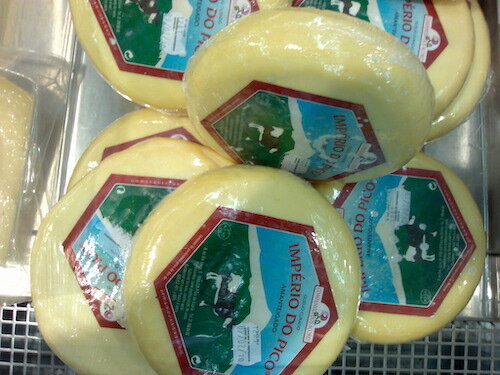7 Azorean Cheeses You Should Know
Azorean cheese board credit Devorah Lev-Tov
Unbeknownst to many, the Azores, an Atlantic Ocean archipelago made up of nine islands belonging to Portugal, is responsible for at least 50 percent of Portugal’s cheese production, even though they make up just 3 percent of its landmass.
Each of the nine islands has been making cheese since the 15th century and several of the cheeses are named for the island they’re produced on. Dairy is a major component of the diet for many Azoreans and Azoreans pride themselves on their “happy cows,” which can be seen grazing across the islands, all year long—the only place in Europe where this is possible. Unlike mainland Portugal, which produces a lot of sheep and goat milk cheese, the Azores produces cow’s milk cheese almost exclusively. The volcanic islands have nutrient-rich soil that lends a distinct terroir to the cheeses, which range from soft to hard, tangy to piquant to salty. Because of this, many of the cheeses have Protected Geographical Status (DOP) certification.
While it can be hard to find some Azorean cheeses outside of Europe and Portugal, in the U.S., Eastern Massachusetts, the Bay Area, and New Jersey have sizeable Azorean and Portuguese populations so some of these cheeses might be found in shops and markets. Online stores like Portugalia Marketplace, ShopPortuguese.com, and Mello’s Courico & Linguica (a store based out of Fall River, Massachusetts) carry a small selection. However, these cheeses are worth seeking out, and if you visit the islands— which are just a 5-hour flight from New York City—leave room in your suitcase to bring some home.
Sao Jorge cheese Credit By MOs810 - Own work, CC BY-SA 4.0 via Wikipedia.
Queijo São Jorge
Probably the best-known Azorean cheese, São Jorge cheese is named for the small island of São Jorge where it’s produced. Also called Queijo da Ilha (“cheese of the island”), it’s a semi-hard raw cow’s milk cheese. This dark yellow cheese has a distinct flavor that’s a little spicy and a nutty, but with a buttery core. The longer it’s aged, the spicier it gets. Produced for more than 200 years, Queijo São Jorge is made in large wheels, and is the Azorean cheese most easily found in the U.S.
Queijo Vaquinha credit Devorah Lev-Tov
Queijo Vaquinha
A creamy and buttery semi-soft cheese, Queijo Vaquinha comes from Terceira Island, which has the second largest population after São Miguel. The traditional version of this cheese is bar shaped, and the interior is holey while the outside has a salt crust. Variations include a round version and one flavored with Azorean-grown ground pepper, giving it a spicy finish.
Queijo do Pico
Queijo do Pico
Hailing from the volcanic island of Pico, this salty cheese is traditionally made with cow’s milk, although today some might have goat’s milk as well. Queijo do Pico is moist, semi-soft, and aged for about a month. It’s round and smooth, with a fat content of about 50 percent.
Omorro photo courtesy of Forever Cheese
Omorro Amanteigado
Since 2012, the Caldeira family has been producing this soft cow’s milk cheese near the natural reserve of Morro del Castelo Branco on Faial Island. Tangy and unctuous, Omorro is very creamy and buttery, with a gooey, spreadable interior. You can slice it, or peel off the top and dip into the center. There are also flavored varieties made with hot peppers and garlic and herbs. Michele Buster from Forever Cheese discovered Omorro on a trip to Faial and started importing it to the U.S.
Queijo do vale
Queijo do Vale
This sour cow’s milk cheese is made exclusively in a small, family-run factory, when in 2015 the 17-year-old daughter of the family had the idea to use the sour water from a nearby spring in Furnas, on the largest island of São Miguel, as a brine. The cows graze on the family farm in Furnas, which is known for its hundreds of mineral-rich hot springs and fumaroles. Queijo do Vale comes in five varieties including buttery, cured, garlic, and oregano.
Sao Miguel cheese photo courtesy of Bottle King Vineyard Market
Queijo do São Miguel
As its name suggests, this DOP cheese is made on the island of São Miguel and aged for a minimum of nine months. Known as the “black rind cheese”, the hard cow’s milk cheese is enrobed in black paraffin and has a salty, piquant flavor.
Sao Joao
Quiejo São Joao
This cheese dates back to 1942 and is another Pico-made cheese, this one named for the town of São Joao, which has incredible views of the Pico volcano, the highest peak in Portugal. Salty and soft, this cow’s milk cheese is creamy and buttery with a distinct aroma. Production is limited though, and it can be hard to find outside of the Azores.








